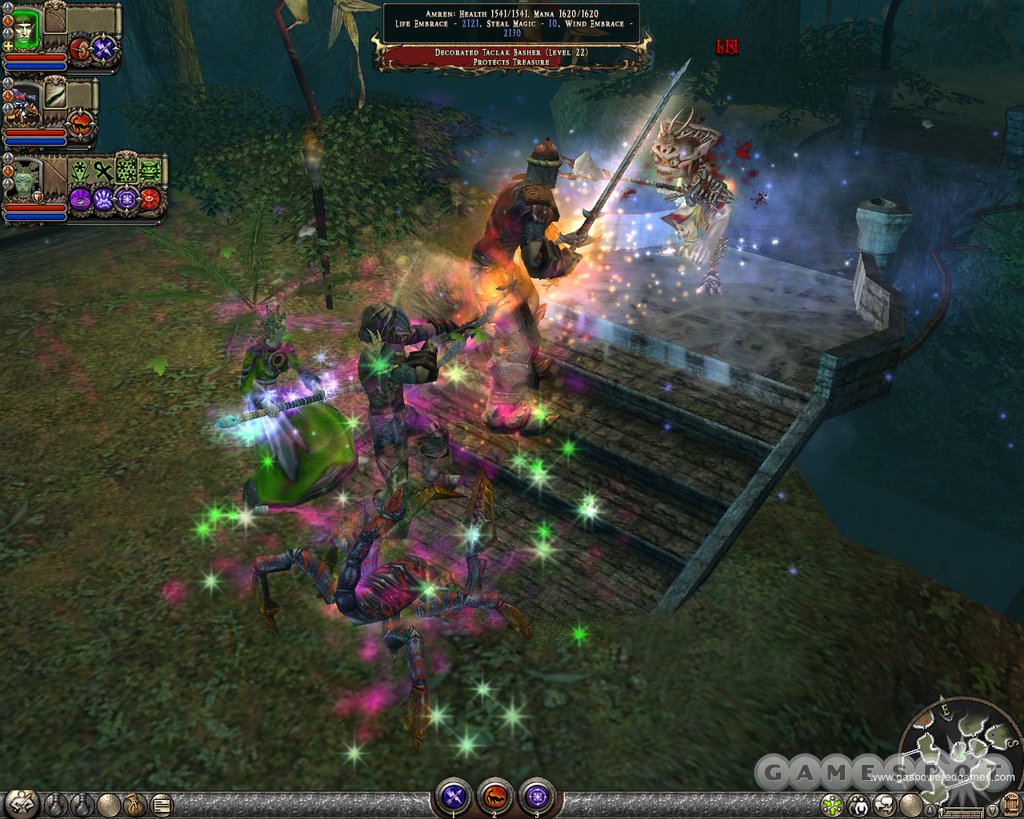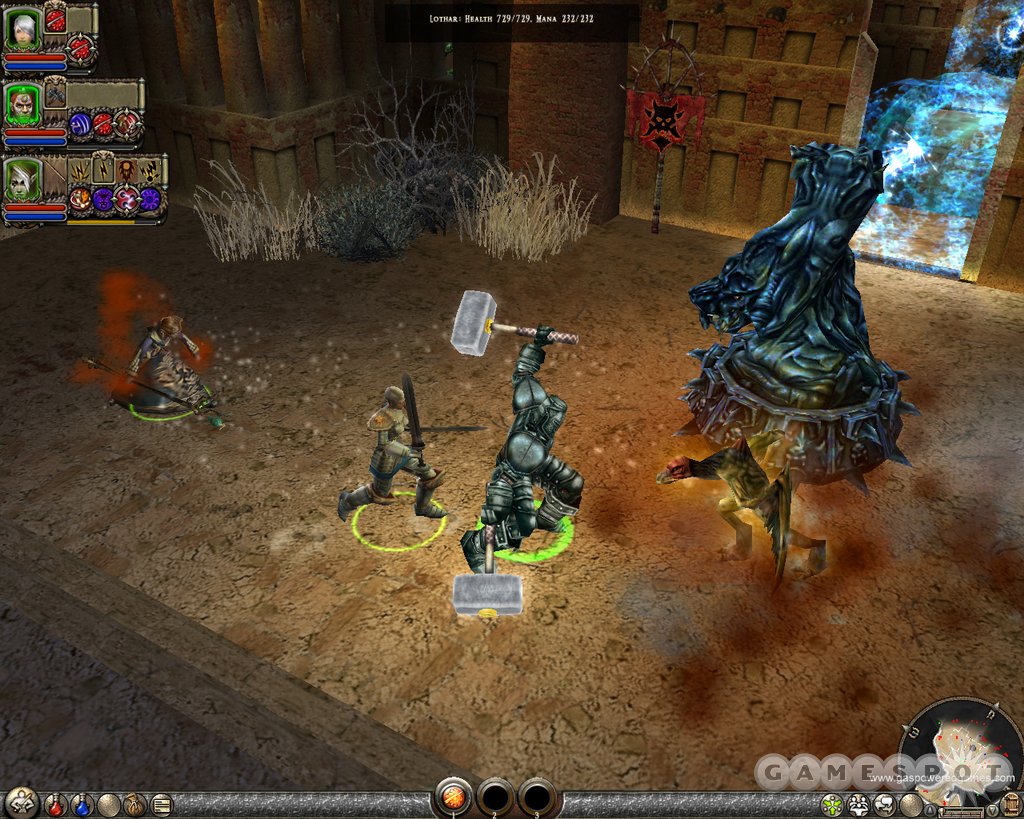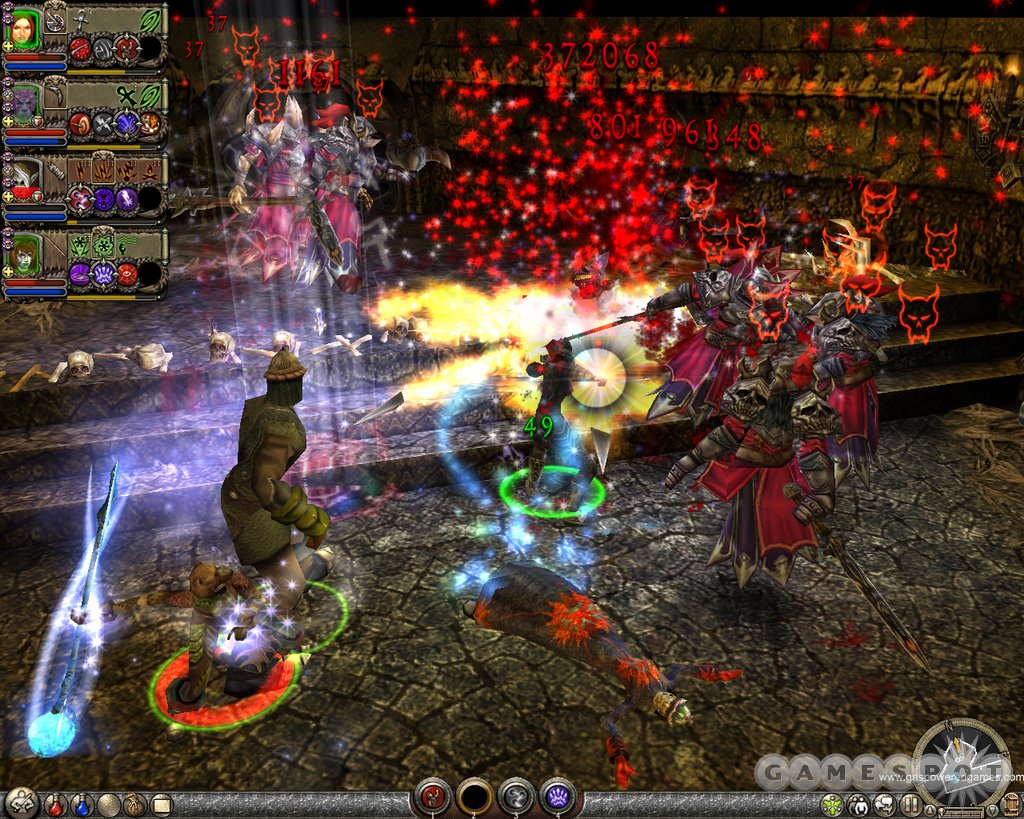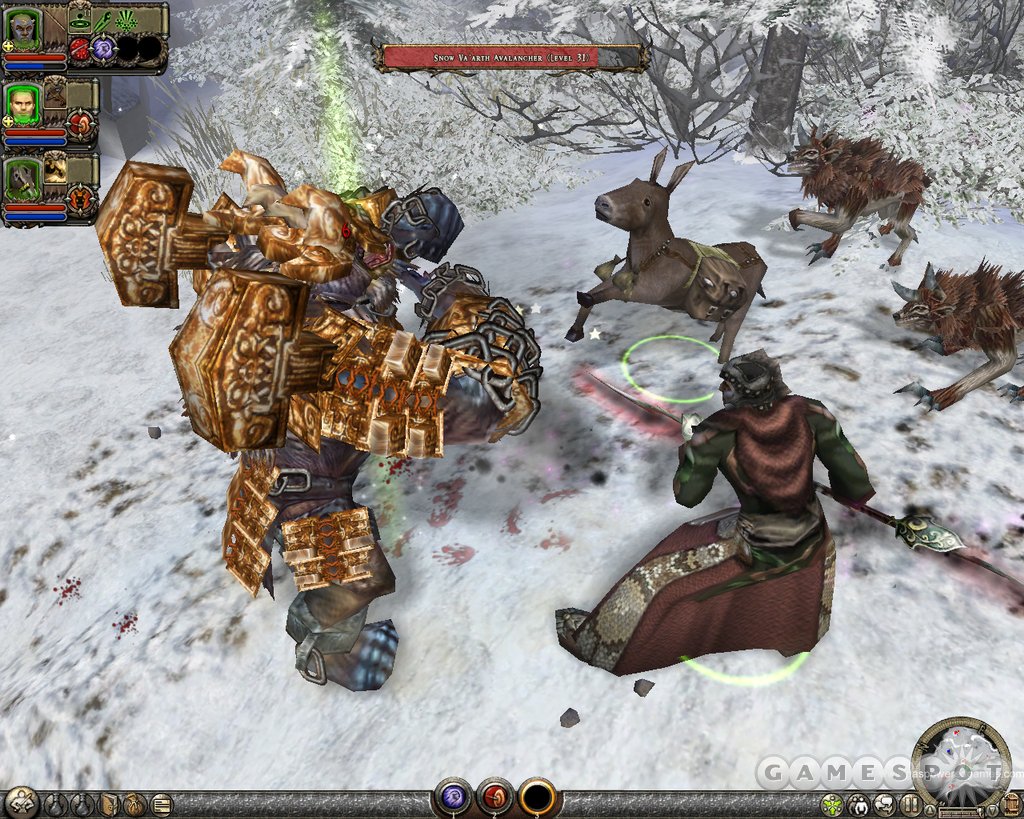Dungeon Siege II Q&A - Final Thoughts
We catch up with executive producer Bartosz Kijanka and get his thoughts on the game now that it's all but done.
Dungeon Siege II, the sequel to 2002's hit action role-playing game, is due to ship to stores next month. When it does, it looks to build upon its predecessor with a vastly enhanced graphics engine, as well as deeper role-playing features. However, at its heart, it's very much a fast-paced, hack-and-slash action game that will task you with creating a character with which you will plow through hundreds and thousands of evil creatures in order to save the fantastical world of Aranna. With the game all but done at this point, we caught up with executive producer Bartosz Kijanka for some final thoughts on Dungeon Siege II.

GameSpot: So Dungeon Siege II is finally done. What are your thoughts at the end of development? Does this feel like the close of Dungeon Siege as a property, or are you already plotting the next chapter?
Bartosz Kijanka Naturally, I'm happy to be finished with such a major project. I feel good about the results, and I think we made a great game. The gameworld is huge and filled with interesting content. I think Dungeon Siege II is a much stronger game than Dungeon Siege, so by that measure I think Dungeon Siege II grows Dungeon Siege as a property. Yes, we are always plotting, and of course you probably already know about the major Dungeon Siege movie production in the works.
GS: If you were to take Dungeon Siege II and compare it to Dungeon Siege, what would you say are the primary differences between the two? Is there anything that you wish you could take out of Dungeon Siege II and put in the original? What were some of the design lessons that you learned along the way?
BK: Dungeon Siege II improves over Dungeon Siege in many ways. At the highest level, Dungeon Siege II offers more character development choices, a deeper story, and much more replayability than Dungeon Siege. There are many features that exist to support those high-level goals, so I won't enumerate them here. What would I take out of Dungeon Siege II and put in the original? Is that a trick question? Certainly, if we know what we know now, we would have made Dungeon Siege even better than it was--but until someone invents time travel, Dungeon Siege II is the best embodiment of our past lessons. When it comes to design, I think there will always be variable opinions on a project of this scope. I think you would be better served to ask one of our designers about this, but in my own opinion, a number of the key lessons in design on this project revolved around the design process, rather than specific features.
GS: How much gameplay do you figure is in Dungeon Siege II? We know that you can play through the campaign three times, and each subsequent time you start with the character that you ended with the previous time, meaning that the game scales up to become a tougher challenge. Is there any randomization or things that will be different on subsequent attempts?
BK: Dungeon Siege II contains a massive amount of gameplay. The exact figure is determined by your skill as a player, how much you like to venture off the main path to explore, and other factors such as how much you like to spend in the shops to maximize your characters. On average, I would expect the campaign to take 60 or more hours to play. It could take significantly longer for some who like to explore, or for those who like to replay sections. Yes, there is a substantial amount of randomization in the game, mixed in with handcrafted scenarios and boss monsters. One could spend a lotof time exploring this world, and I expect many people will.

GS: Dungeon Siege was a fast-paced, easy-to-play action role-playing game. Dungeon Siege II introduced a lot of new features, such as the new skill system and a deeper party system. How did you balance adding that complexity while still keeping the game easy to play?
BK: Balancing a large RPG is extremely challenging. We used several custom tools and countless play tests to understand gameplay quantitatively as well as qualitatively. We collected huge volumes of gameplay statistics and then invested a lot of time in interpretation and understanding how the mechanics of our features translated to the experience of "fun." We then played with the dials, so to speak, until we found a balance that felt good to just about everyone. Complexity of certain features was always on our minds through this exercise, and at times we made decisions to simplify certain features because we determined they detracted from the core experience.
A Deeper Dungeon Siege
GS: What were some of the bigger challenges during development? Was this an easier game to make, since you had the experience of making the first game, or did it prove to be just as challenging? 
BK: This was a very challenging game to make, but for different reasons than the original. We managed to work a lot smarter during development, but we still had a unique set of challenges that pushed us to learn. For example, Dungeon Siege II has many more cinematic sequences and much more voice-over than the first game. This was the first time we made a game with such a high volume of those elements, so content management and workflow were bigger issues than in Dungeon Siege. Overall, even though we faced new challenges in Dungeon Siege II, it was ultimately an easier and much more predictable project than Dungeon Siege.
GS: Have there been any moments in the game where it surprised you? That it did something that wasn't anticipated? Was it something that was actually beneficial and so you kept it in?
BK: Yes, there were examples of surprises or features that worked better than anticipated. For example, monster jumping and knockbacks were something we were skeptical of for various reasons, but once prototyped we found these were fun and we kept them. Some of the largest surprises had to do with features that we put in, but we ultimately found that they didn't add to gameplay and were subsequently cut. May they rest in peace.
GS: How did the multiplayer turn out? We know that each player can lead a group of characters in multiplayer, so instead of having just three or four characters in a party, you may have three or four human-controlled characters, as well as six or eight computer characters as well. How did this affect the balancing of the game?
BK: Multiplayer is just plain fun. I recommend a heavy dose of multiplayer, once a day, with food or between meals. Make sure to drink plenty of water to avoid dehydration. Variable number of players in multiplayer is accounted for, as the game will dynamically adjust the game difficulty based on the number of players.
GS: What's the improvement graphically between the first game and Dungeon Siege II? Did you take advantage of any particular new technology? How much steeper are the hardware requirements compared to the first game?
BK: Dungeon Siege II looks much better than the original. We changed and optimized the renderer to work with DirectX 9, as the original Dungeon Siege was a DirectX 7 game. We now support shaders, and have a new particle system that has 10 times the performance of the original. We have four times the texture detail and several times the polygonal density in the scenes. The hardware requirements are relatively forgiving. If you have a 32MB video card that supports hardware transform and lighting, you can play on a system with a 1GHz CPU.
GS: What about sound and music? Is this a richer game, in terms of audio, than the first game?

BK: Absolutely. It has much more music, over eight hours of unique voice-overs, and many more special sound effects for spells and ambient effects.
GS: Finally, aside from probably taking a well-earned vacation, what's next for Gas Powered Games? Is the entire team transitioning to work on Supreme Commander, or are there other projects in the works?
BK: I think this is where we cue the evil laugh. Seriously though, we certainly have many things in progress at Gas Powered Games, including Supreme Commander, which I'm also very excited about.
GS: Thank you, Bartosz.
Got a news tip or want to contact us directly? Email news@gamespot.com
Join the conversation